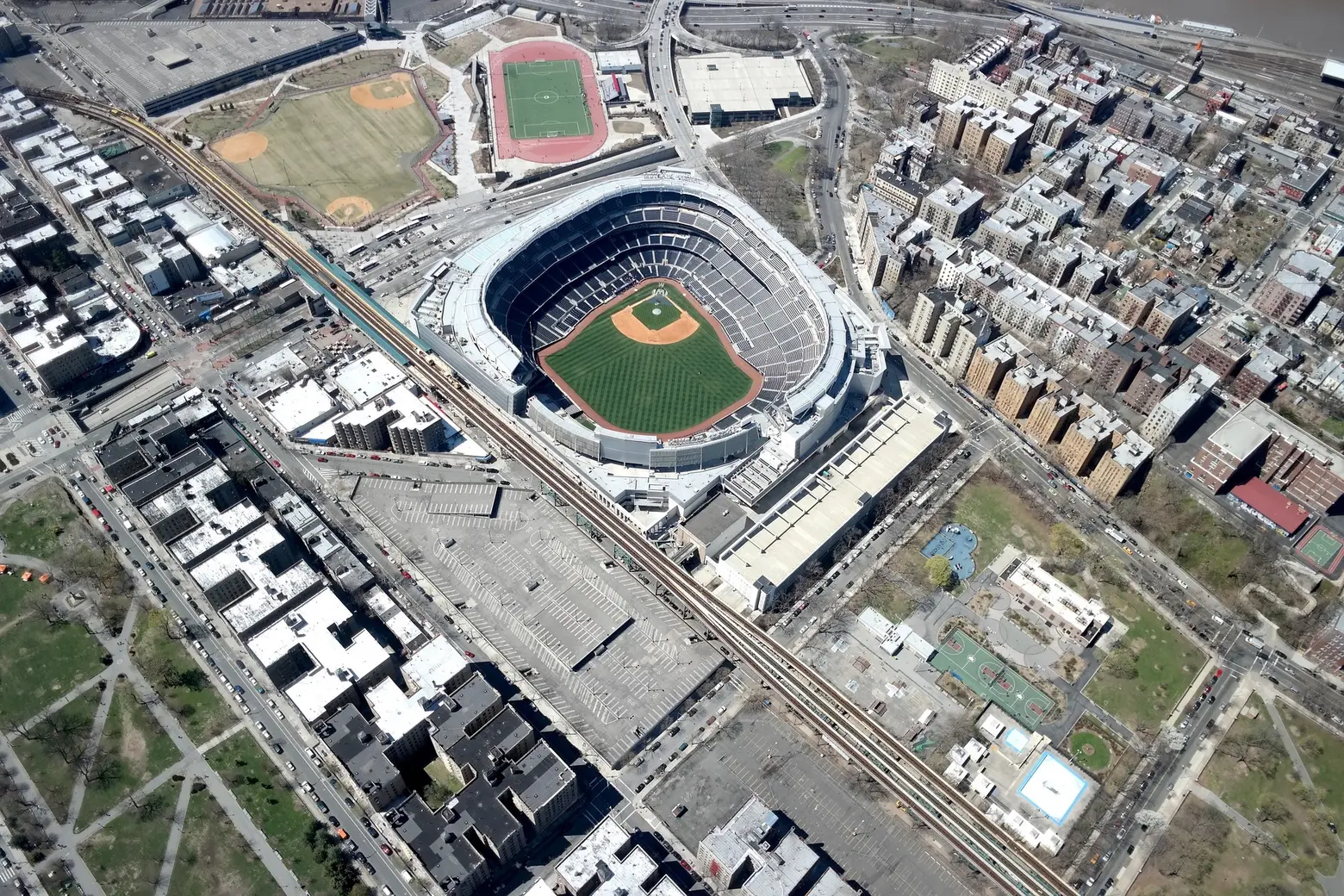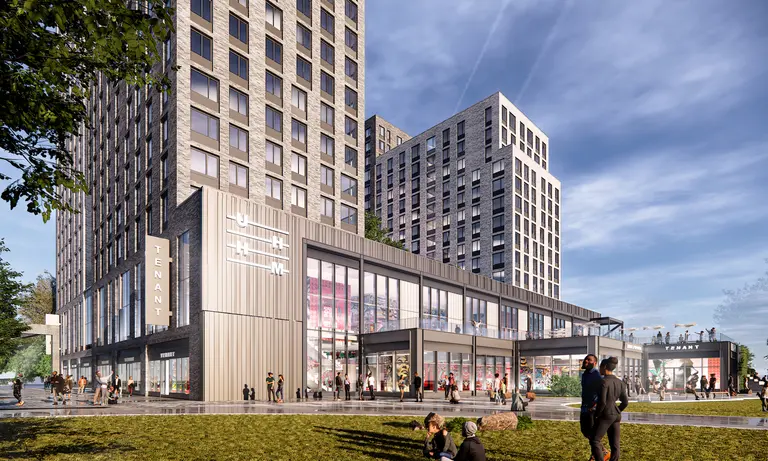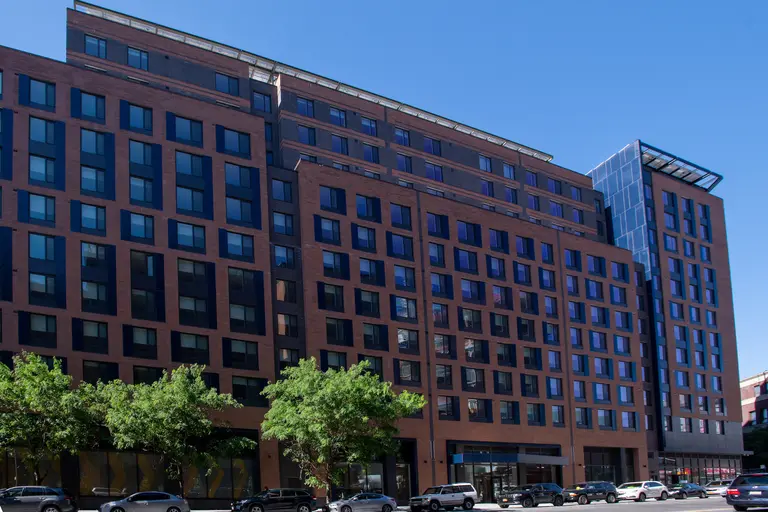How a new soccer stadium could be a catalyst for neighborhood growth in the South Bronx

Image by A.V. Flores from Pixabay
With a deal between the New York City Football Club and developer Maddd Equities to build a new soccer stadium in the South Bronx on the horizon, the Urban Land Institute New York (ULI NY) and Bronx Community Board 4 (CB4) have issued a report outlining how the new stadium could best impact the surrounding community. ULI New York recommendations outline important strategies that would allow the proposed stadium to become a catalyst for neighborhood growth.
According to a press release, the New York City Football Club (NYCFC) is nearing an agreement with the city on the development of a new soccer stadium in the South Bronx. As 6sqft previously reported, the long-anticipated plan to build a home stadium for New York City’s soccer team in the Bronx has been moving forward between a group of developers led by Maddd Equities and the New York City Football Club. New York City F.C., which has been looking for a permanent home for years, currently plays games at nearby Yankee Stadium. The 25,000-seat stadium is part of a $1 billion development plan that also includes a hotel, new school, and affordable housing.
At the request of Bronx CB4, ULI NY convened a 10-member Technical Assistance Panel (TAP) to study the neighborhood and consider the potential impacts of a soccer stadium near Macombs Dam Park. ULI NY’s panel of real estate professionals with development, design, finance, and legal expertise studied the site and briefing materials from Bronx CB4 and interviewed community stakeholders.
The report, titled “Bronx Community Board Four Technical Assistance Panel: Neighborhood-Focused Strategies for Future Growth,” outlines strategies and investments that should accompany stadium development and that would positively impact the surrounding community year-round. The panel’s recommendations are broken out into three categories: Design and Programming, Connectivity and Planning for a Community-Focused Neighborhood. Within that framework are recommendations for stadium design and community programming, increasing use of public and alternative transit options and improving neighborhood walkability and connectivity to open space and the waterfront. A full copy of the report can be read here.
Considering the proposed stadium’s location, the report suggests that it would be advantageous if the stadium becomes a multi-purpose asset for the community and serves a wider purpose beyond its primary role: The facility could serve as a community hub, avenue for health and wellness programs, business incubation, neighborhood sports activity and more.
Regarding connectivity, steps should be taken to encourage NYCFC fans to use public and alternative transportation options including rail, bus, walking, and biking to better manage traffic flow and lessen congestion on game days. The report highlighted the importance of building better and more innovative connections from the east side of the rail lines and the Major Deegan Expressway to the Jerome Avenue corridor and beyond.
With careful planning and targeted zoning changes, the report suggests, River Avenue could become a “bustling, dense, mixed-use corridor.” One of the report’s proposed zoning change involves the conversion of an underutilized parking garage on River Avenue into a multi-story affordable housing unit.
Miriam Harris, Executive Vice President, Trinity Place Holdings Inc. and Chair for the TAP, said in a statement, “The TAP team’s stakeholder interviews and experience tell us that a soccer stadium in the South Bronx will be most successful if it is more than just a sports venue. By designing and programming a stadium as a year round center of community activity while also using its development as a catalyst for physical improvements in the surrounding area, the stadium will significantly enrich the neighborhood as it also provides a singular experience for New York City soccer fans. We thank CB4 for inviting us to work on this TAP and giving us the opportunity to share our recommendations.”
The stadium, if approved, would replace struggling parking lots on East 153rd Street from River Avenue to the Major Deegan Expressway. An off-ramp from the expressway would be shuttered to make way for a pedestrian walkway to a new waterfront park on the Harlem River. The approval process also involves a rezoning application and public review. If approved, construction of the project would not begin for at least two years.
RELATED:
- Plans for NYC’s first soccer stadium inch forward in the Bronx
- Plans for New York City’s first soccer stadium focus on the Bronx, again
- $700M proposal calls for NYC’s first soccer stadium and 550 affordable apartments in the South Bronx
- City backs away from Yankee Stadium parkland promise in favor of residential high rise

























